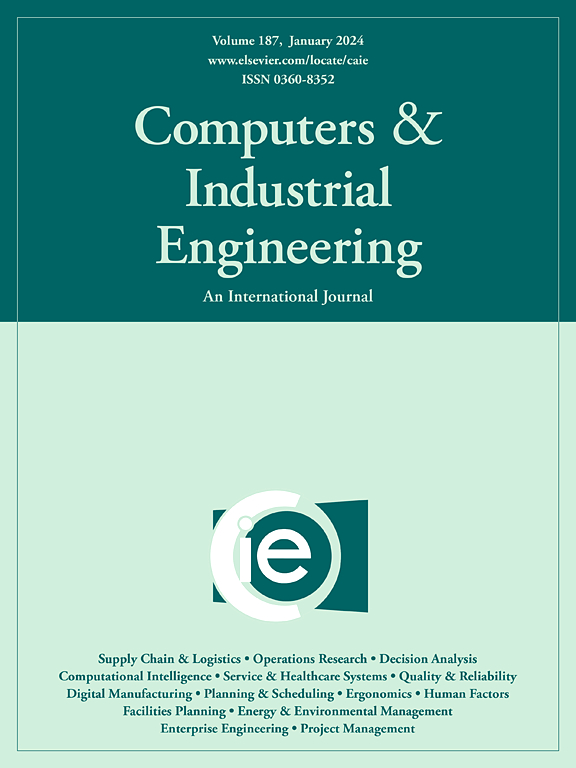Row and column-wise robust optimization model for biorefineries storing perishable biomass under weather uncertainty: Boosted by machine learning
IF 6.7
1区 工程技术
Q1 COMPUTER SCIENCE, INTERDISCIPLINARY APPLICATIONS
引用次数: 0
Abstract
This study builds upon our earlier research (Razm et al., 2023). This study makes several contributions. First, we define three weather criteria (Rainfall, Temperature, Daylight hours) to incorporate weather conditions into the optimization model. We gather real weather data and conduct data preprocessing. Next, numerous calculations are performed based on the criteria to determine biomass availability ranges. Second, we immunize our system against uncertainties; however, uncertain parameters in our model possess specific features. Uncertainties exist both in the rows and columns. The traditional method cannot effectively address this issue. Therefore, we propose a row and column-wise robust optimization model to tackle weather and price uncertainties. Third, incorporating the aforementioned contributions into our previous model presents challenges. The new model is complex. Analyzing its behavior and interpreting results are challenging for this study. However, we conduct a series of numerical experiments and extract valuable managerial insights. Results show that despite incurring extra costs initially, the manager stands to gain more profit in the future, attribute to the system’s robustness. Finally, we enhance our model and increase system profitability by adopting data-driven robust optimization based on Machine Learning.

天气不确定情况下生物精炼厂储存易腐生物质的行和列稳健优化模型:机器学习助推
本研究以我们之前的研究(Razm 等人,2023 年)为基础。本研究做出了几项贡献。首先,我们定义了三个天气标准(降雨量、温度、日照时间),将天气条件纳入优化模型。我们收集了真实的天气数据,并进行了数据预处理。然后,根据这些标准进行大量计算,以确定生物量可用性范围。其次,我们将系统免疫于不确定性;然而,我们模型中的不确定参数具有特定的特征。行和列中都存在不确定性。传统方法无法有效解决这一问题。因此,我们提出了一种行列稳健优化模型,以应对天气和价格的不确定性。第三,将上述贡献纳入我们之前的模型是一项挑战。新模型非常复杂。对本研究而言,分析其行为和解释结果具有挑战性。不过,我们还是进行了一系列数值实验,并从中获得了宝贵的管理启示。结果表明,尽管最初会产生额外成本,但由于系统的稳健性,管理者在未来会获得更多利润。最后,我们通过采用基于机器学习的数据驱动稳健优化来增强我们的模型并提高系统的盈利能力。
本文章由计算机程序翻译,如有差异,请以英文原文为准。
求助全文
约1分钟内获得全文
求助全文
来源期刊

Computers & Industrial Engineering
工程技术-工程:工业
CiteScore
12.70
自引率
12.70%
发文量
794
审稿时长
10.6 months
期刊介绍:
Computers & Industrial Engineering (CAIE) is dedicated to researchers, educators, and practitioners in industrial engineering and related fields. Pioneering the integration of computers in research, education, and practice, industrial engineering has evolved to make computers and electronic communication integral to its domain. CAIE publishes original contributions focusing on the development of novel computerized methodologies to address industrial engineering problems. It also highlights the applications of these methodologies to issues within the broader industrial engineering and associated communities. The journal actively encourages submissions that push the boundaries of fundamental theories and concepts in industrial engineering techniques.
 求助内容:
求助内容: 应助结果提醒方式:
应助结果提醒方式:


